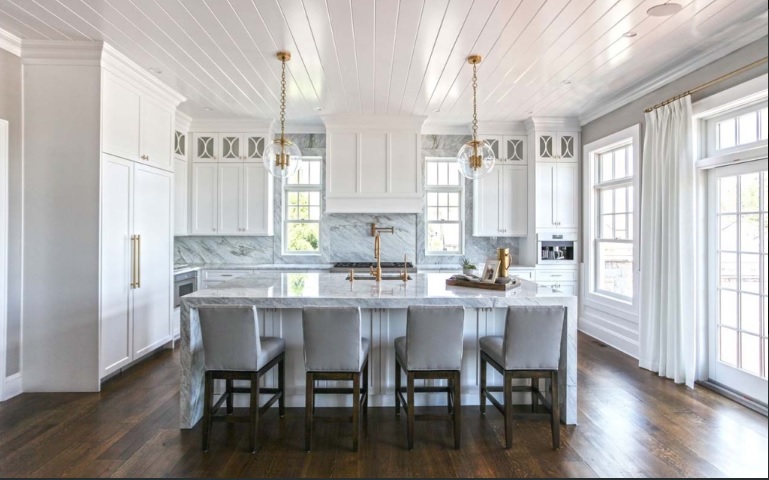Are you struggling to choose a floor that can handle spills, steam, and daily traffic without sacrificing style? You’re not alone, and it’s why Kitchen Traditions, a Connecticut kitchen remodeling company, often guides homeowners through the pros and cons of today’s most durable, beautiful materials. This quick guide breaks down the best options by performance, care, and cost to help you decide with confidence.
Porcelain tile is a top pick for wet spaces. It’s dense, water-resistant, and stands up to heavy foot traffic, pets, and dropped pans. You’ll find designs that mimic stone, concrete, and even hardwood with incredible realism.
Luxury vinyl plank (LVP) and luxury vinyl tile (LVT) bring comfort and durability at a friendly price. They’re waterproof, warm underfoot, and quiet—great for busy households and upstairs bathrooms. Click-lock systems make installation efficient, and modern textures convincingly mimic oak, hickory, slate, and marble.
Engineered wood delivers real-wood warmth with better moisture tolerance than solid hardwood. A plywood or HDF core stabilizes the plank, while the veneer gives authentic character. It needs careful maintenance—quick wipe-ups and area rugs around sinks—but pays off with a timeless look that ties open-concept spaces together.
Natural stone, like marble, travertine, and slate, creates a high-end look with unique variation. It’s durable but porous, so sealing is key, and some stones etch with acids like lemon juice.
For bathrooms, select textured or honed finishes to reduce slipping and keep a squeegee nearby to manage water spots. In kitchens, honed granite or slate offers rugged beauty with easier upkeep.
Sheet vinyl has made a comeback with better patterns and seamless installations that help block moisture. It’s budget-friendly, soft underfoot, and simple to clean—ideal for family bathrooms and mudroom-adjacent kitchens. While it won’t match the resale cachet of tile or wood, its practicality is hard to beat, especially for rental units, basements, or quick refreshes.
Cork and rubber deserve a look if comfort and noise control matter. Cork is naturally antimicrobial and springy, making long cooking sessions easier on your joints. It needs sealing and prompt spill cleanup. Rubber tiles are slip-resistant and tough, perfect for utility-heavy zones.
For radiant heat systems, porcelain tile and natural stone shine thanks to excellent thermal conductivity. LVP also pairs well with many radiant systems—check manufacturer specs for temperature limits. Engineered wood can work with radiant heat if you follow strict installation guidelines and maintain stable humidity.
Installation quality determines how long your floor lasts. Proper subfloor prep prevents cracks and squeaks. In wet rooms, use waterproof membranes under tile and seal all transitions, perimeters, and penetrations.
For vinyl and engineered products, ensure flatness tolerances are met and use manufacturer-approved adhesives or underlayments. Small shortcuts turn into big problems later—and for the top bathroom remodeling Oxford CT offers, contact Kitchen Traditions today.
Ready to compare samples and build a plan that fits your home and routine? Contact Kitchen Traditions to learn more about their kitchen remodeling services for individuals and families, explore finishes side by side, and get a clear, no-pressure estimate tailored to your space.



